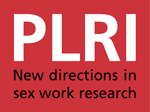journal article
Article in AIDS Clinic Res S1:002. Purpose: This study examined the social and contextual factors associated with continued high risk sexual behaviors among male-to-female transgender (MTFTG) adolescents living with HIV/AIDS. The study is part of a larger qualitative study of 59 racial/ethnic minority adolescents living with HIV/AIDS. Methods: In-depth focused interviews were conducted with five MTFTG adolescents (16-24 years) living with HIV. Content analysis was conducted to identify themes related to continued sexual risk behaviors. Article in Culture, Health and Sexuality. The purpose of this study was to identify barriers to accessing sexual health services among gay, bisexual and heterosexual-identifying

